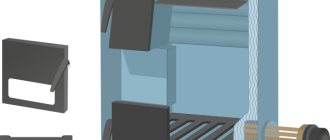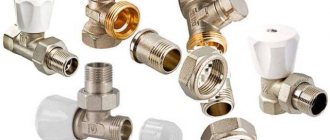A device such as a thermal head for a heating radiator is designed to adjust the heating temperature. With its help, you can use the coolant more rationally and save money.
Guaranteed effect from use - the right choice. To do this, you must have as much information as possible about these devices.
From this article you will learn about the existing types of thermal heads, the device, the principle of operation and the rules for their installation on radiators. We will also give the main criteria influencing the choice, and briefly consider the best manufacturers of such equipment.
Features of the structure of the thermal head
The most popular thermal head consists of a body, bellows, locking element, pusher, stem (locking cone), return spring, sealing and fasteners.
The amount of coolant passed into the radiator is controlled by the valve device. Most products are equipped with this element.
The plastic body is made by hot stamping. It can be either transparent or colored - from white to black. The bellows are made of brass or galvanized steel. In most models, the radiator head housing and the thermostatic valve are compatible.
The greatest reaction rate to temperature fluctuations is possessed by such a bellows filler as gas condensate.
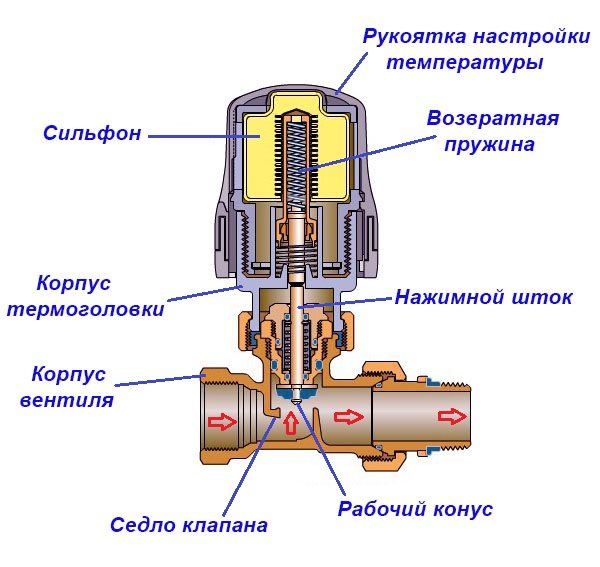
Two stainless steel springs help to open and close the stem. One of them returns the stem to its original position after the valve is closed, and the second after opening it.
There is a locking element on the body at the very top. It is needed to fix the settings. If the settings have not been changed for a long period or the moving elements of the device are inactive, they can stick to it.
To combat this phenomenon, experts recommend dismantling the thermal heads from the valves as soon as the heating season ends. When the thermostatic valve is designed for a pressure of 4 atm, the likelihood of sticking is significantly reduced.
There is such a thing as "gesthesis" of the head. The smaller it is, the faster the device responds to temperature changes.
Thermostat on batteries: how to regulate heating?


The temperature controller consists of of two components: heads and valves. The latter is an actuator.
The thermal head contains a cylinder with a working fluid. In some devices, it is replaced by gas.
Volatiles affect the water supply faster in the harness, but they do it not so accurately.
Important! When creating a project, take into account the hydraulic resistance of the system. When using one pipe, it less than two.
Types of thermal heads and how they work
Thermal heads belong to shut-off and control valves.
There are three types of thermostatic heads:
- manual;
- mechanical;
- electronic.
The functions are all the same, but the implementation methods are different. They have different capabilities depending on the last parameter.
What are handheld thermal heads?
In terms of design, thermostatic heads duplicate a standard tap. By turning the regulator, you can adjust the volume of the coolant transported through the pipeline.


By setting the thermostat just 1 ° lower, you can save 6% of the amount you have to pay for electricity in a year
They are mounted instead of ball valves on opposite sides of the radiator. They are reliable and inexpensive, but you will have to operate them manually, and turning the valve every time, relying solely on your feelings, is not very comfortable. Basically, such thermal heads are installed on cast iron batteries.
If you switch the valve stem several times a day, the valve flywheel will weaken. As a result, the thermal head will quickly fail.
Features of mechanical thermal heads
Thermal heads of mechanical type have a more complex design and they maintain the set temperature in automatic mode.
The device is based on a bellows in the form of a small flexible cylinder. Inside it is a temperature agent in liquid or gaseous form. As a rule, it has a high coefficient of thermal expansion.
As soon as the specified temperature indicator exceeds the norm, under the influence of the internal environment, which has greatly increased in volume, the rod begins to move.
As a result, the cross-section of the through passage of the thermal head is narrowed. In this case, there is a decrease in the throughput of the battery, and, consequently, the temperature of the coolant to the set parameters.
As the liquid or gas in the bellows cools, the cylinder loses its volume. The rod rises, increasing the dose of the coolant passing through the radiator. The latter gradually warms up, the balance of the system is restored and everything starts all over again.
A positive result will be only if there are thermostats in all rooms and on each radiator.
Devices with liquid-filled bellows are more popular. Although the reaction of gases is faster, the technology of their production is rather complicated, and the difference in measurement accuracy is only 0.5%.


A mechanical regulator is more convenient to use than a manual one. He is fully responsible for the indoor climate. There are many models of such a thermal valve, which differ from each other in the way of signaling.
The thermostatic head is mounted so that it is oriented towards the room. This will improve the accuracy of the temperature measurement.
If there are no conditions for such an installation, a thermostat with a remote sensor is mounted. It is connected to the thermal head by a capillary tube with a length of 2 to 3 m.
The expediency of using an external sensor is due to the following circumstances:
- The heater is placed in a niche.
- The radiator is 160 mm deep.
- The thermal head is hidden behind the blinds.
- Large width of the window sill above the radiator, while the distance between it and the top of the battery is less than 100 mm.
- The balancing device is located vertically.
All manipulations with the radiator will be performed with an orientation to the temperature in the room.
What is the difference between electronic thermal heads?
Since, in addition to electronics, such a thermostat contains batteries (2 pcs.), It is larger in size than the previous ones. The stem moves here under the influence of the microprocessor.
These devices have a wide range of additional functions. So, they can set the temperature by the hour - at night it will be cooler in the room, and by morning the temperature will rise.
It is possible to program temperature readings for individual days of the week. Without reducing the level of comfort, you can significantly save on heating your home.
Although the batteries have sufficient charge to last for several years, they still need to be monitored. But the main disadvantage is not this, but the high price of electronic thermal heads.
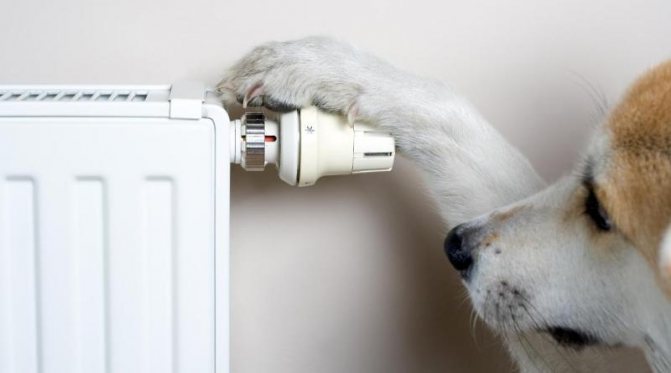

In the photo there is a thermal head with an external version of the sensor. It limits the temperature to the set value. Adjustment possible from 60 to 90 °
If a decorative screen is installed on the radiator, the thermal head will be useless. In this case, a regulator with a sensor that records the external temperature is required.
How to choose the right thermostat - types
Before choosing thermostats for an oil radiator, dry or cast iron batteries, it is necessary to find out the parameters of the heating system. The main value is assigned to pressure, the integrity of pipes, connections, heat and heating rate completely depend on this indicator. We recommend that you do not select heat regulators yourself, let the specialists do it, they carry out special measurements and calculation of data on the dwelling, the thickness of the walls, pipes, the number of storeys of the building and so on.
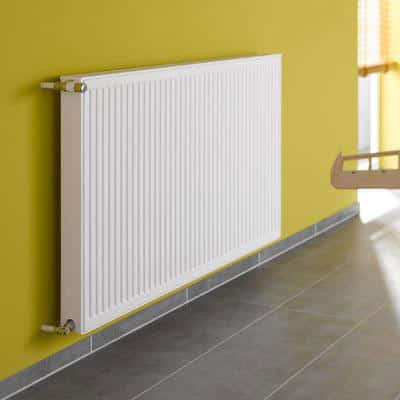

Photo - Radiator with thermostat
The right heating control systems will allow you to keep your home at a comfortable temperature while using minimal fuel. Consider the types of thermoregulators and their control:
Room thermostats. Room thermostats need free air flow to measure temperature, so they should not be blocked by curtains or furniture, or placed next to heat sources. They are not installed directly on heating systems, but they are good helpers in an integrated approach to organizing protection. They are manual and automatic, and are also actively used for heated towel rails.
Thermostatic valves (TRV devices). Thermostatic valves do not control the boiler: they can reduce the flow of water through the radiator on which they are installed when the temperature rises above a certain level. It is necessary to install such devices where the level of pressure and water is lowest, this will help save energy. They are built-in and overhead.
Professionals do not advise mounting such devices under covers or other design devices that give aesthetics, so you will seem to deceive the device, it will show the wrong temperature due to injection.
Zone remote controllers. They are recommended for use with thermostatic valves. These thermostats will allow you to control the air temperature in specific rooms or areas of rooms using infrared rays. As soon as the level is reached, they transmit a signal to the boiler or the radiator regulator, after which it stops working. It is a good indoor safety device.
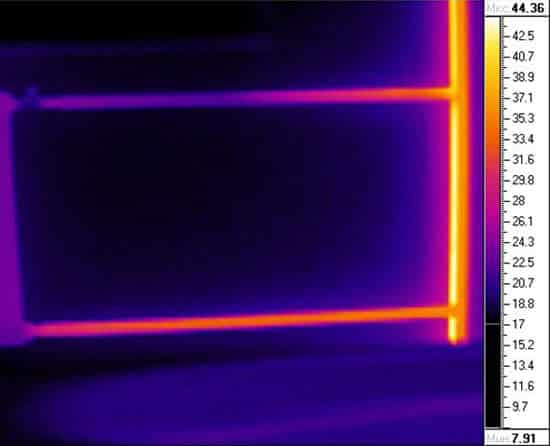

Photo - Infrared thermostat
Cylinder thermostat. This is especially important if you have a double-circuit boiler. At the outlet, the water reaches very high temperatures, up to 80 degrees, in order to protect the pipes from cracking and leaking, such liquid thermostats must be installed before approaching the radiators. They are programmable, adjustable in any range from 60 (sometimes less) degrees.
Control systems ("smart" thermostat). By the principle of operation, they are very similar to direct-acting water thermostats for radiators (universal devices). They monitor the state of the system from the command block, and completely shut down the boiler until normalization. In addition to the fact that they can turn off the boiler equipment, these systems control the amount of hot water entering the pipes. Close the valves if necessary.
Photo - Digital thermostat
Thermal head installation rules
The connection point when installing the thermal head on the radiator does not depend on its type. In any case, this is a pipe that directly supplies the coolant to the battery.
For the device to work correctly, air must circulate around it continuously.
Connection recommendations
Each manufacturer gives recommendations on how to connect the thermal head.
Despite this, there are general installation conditions:
- The housing must be protected from direct UV rays. Otherwise, the device will not work accurately.
- The thermal head must be open. It should not be hidden by any protective boxes, furniture.
- The device must not be located above the heating pipes. In this case, there will be a mismatch between the room temperature and the area around the head.
- If the device is practically isolated, it is necessary to arrange a bypass line or install a bypass valve in the area of the supply pipe and return.
- The piping to be connected must not exert pressure on the valve body.
During installation, the thermal head regulator must be set to maximum. This will ensure correct operation of the device. Immediately before installation, the movement of water or other coolant in the circuit must be shut off, then drained.
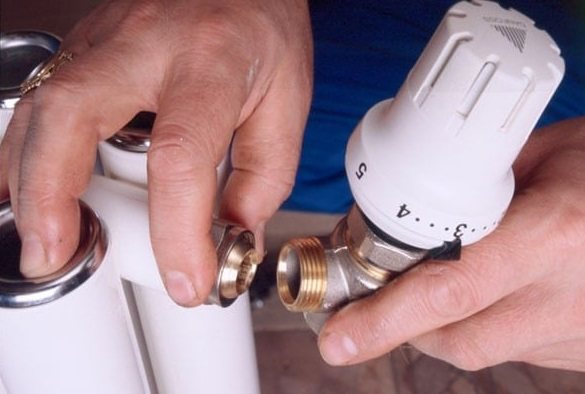

It is forbidden to install the thermal head vertically. It should be parallel to the floor. This position ensures that it is not affected by warm air.
Instrument installation sequence
Installation must begin with cutting the pipes, which is performed, stepping back a little from the radiator. The next step is to dismantle the existing valves. Further, the shanks are separated from the valves and screwed into the radiator plugs.
The piping is mounted in place, having previously assembled it, the pipes are connected. It remains to adjust the temperature by turning the thermostat knob until the notches match the existing marks on the body corresponding to a certain temperature.


It is not recommended to overtighten the thermal head fastening nuts, because the materials from which it is made are rather soft. For this, it is better to use a torque wrench.
It is important that the arrow on the body points towards the flow of the hot coolant in the system. Otherwise, the work has been done in vain, nothing will work. The thermal head can be installed both at the inlet and at the outlet.
The recommendations of the manufacturers regarding the level of installation of the device cannot be disregarded, since it is calibrated for the temperature regime at this height. Basically it is 0.4 - 0.6 m from the floor.
But not all batteries have an upper supply, it can be lower. If there is no sample of suitable height, exit in the setting of the thermal head to a lower temperature.
Since it is cooler on the floor and the appliance is set to the temperature that should be at the top of the battery, it will be hot in the room. In order not to do this, you can install a thermal head with a remote sensor. There is also such an option as self-tuning the regulator.
Specifics of setting up
For normal operation of the device, preliminary configuration is required. Before that, they turn on the heating and isolate the room by closing the door.
A thermometer is installed at a certain point and the setting is started:
- Turn the thermal head to the left until it stops so that the coolant flow is completely open.
- Wait until the temperature rises by 5-6 ° compared to the initial one.
- Turn the head all the way to the right.
- When the temperature drops to the desired value, the valve is gradually unscrewed. The rotation is stopped when noise appears in the radiator and the case warms.
The last position of the thermal head corresponds to a comfortable temperature. She will be constantly supported.


Built-in programs are incorporated into the design of electronic thermal heads. They make it possible to adjust the temperature with great accuracy - up to 1 degree
The sequence described is suitable for most instruments. If it is different, then it is not difficult to fulfill it, since everything is detailed in the passport.
What are the criteria for choosing a thermal head?
Thermoregulatory devices are produced by many manufacturers.
To make the right choice, you need to be guided by the following criteria:
- Thermal valve to which the head will be attached... Since the connection can be clip-on or threaded, you need to pay attention to this point. If the manufacturer is the same, there will be no problem.
- Type of threaded connection on the head itself... It can be in the form of a nut with shutters or just round. In the first case, during installation, an additional tool is needed to crimp the connection. In the second, everything is much simpler.
- The presence of a "skirt"... The head looks better with it, because it closes the work area.
- Manufacturing material... The cheapest are thermal heads in a plastic case. The expensive models have a metal case.
- Plastic quality... Some manufacturers, in order to reduce the cost of their products, use the cheapest type of plastic. The strength of the structure suffers from this, and over time, the plastic turns yellow and loses its aesthetic appearance.
- Work item type... The choice will have to be made between liquid, gas, electronic and paraffin.
- Smooth rotation... The handle should rotate smoothly. This is a sign of good quality. All sorts of crackles, squeaks and seizures indicate a not-so-high-quality product.
- Graduation and scale length... For most models, it is in the range of +5 - +30 ° C. If the scale of divisions is located around the entire perimeter of the head, it can quickly wear off.
- The presence of an anti-vandal casing... It protects against unauthorized access to settings.
- Design... Since thermal heads are mostly visible, their appearance and color scheme are important.
It is not necessary to purchase a ready-made kit consisting of a thermal valve and a thermal head. These devices can be purchased separately.


The gas-filled bellows are not too sensitive to external heat sources. This is a definite plus, but its cost is much higher than that of a liquid bellows.
A thermal head equipped with automation wins a lot, but it is not always effective. It makes no sense to mount it on cast iron radiators. This material is very heat-consuming, and since the mass of the battery is large, it has great inertness. Only the manual type of head can work correctly here.
A quick overview of popular brands
The right decision when buying a thermal head is to focus on reputable manufacturers. An unfamiliar trademark with an unknown history is a big risk of wasting money.
You can safely purchase products from manufacturers such as Dunfoss, Oventrop, Caleffi, Salus and other well-known companies.
Place # 1 - Danfoss
The Danfoss concern has been producing thermal heads for more than 60 years. This is a Danish manufacturer; under its license, products are also produced in Russia.
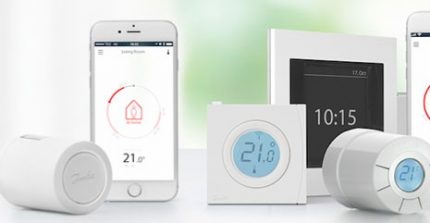

The range of equipment for automation of heating systems from the Danfoss concern is rich and meets advanced technologies. You can control the work and adjust the thermal heads remotely using a smartphone for this
The most frequently asked question is the RTS Everis thermal head. This is a bellows product with liquid filling. Mates with branded thermal valves by direct fixing. Others require an adapter.
Test the existing types of brand thermal heads in the following video:
Place # 2 - Oventrop brand
Oventrop thermal heads of the Uni line are in great demand among consumers. They are equipped with a liquid bellows. They are connected to the thermal valve using a union nut. The temperature can be set within the range of +7 - +28 ° C.
There is a possibility of complete closure. The heads are designed for the maximum temperature in the system +100 - +120 ° C - these are the characteristics indicated by the manufacturer in the accompanying documentation.


Oventrop Uni heads are compatible with other plumbing products from this company. They can be connected without an adapter to other devices with a built-in valve and corresponding thread
Install them on thermostatic valves with a suitable connection. On the heads of many series there is a special mark for visually impaired people, an anti-vandal casing.
Place # 3 - Thermo
Consumers of the Swiss company Thermo, in particular, the Royal Thermo RTE 50.30 model, gave a high appraisal.It has a wide control range - from +6 to +28 ° C, a low hysteresis value - 0.55 degrees. There is also a zero position.
For correct operation, the coolant must have a temperature not higher than 100 ° C. Coupling with the valve - union nut.
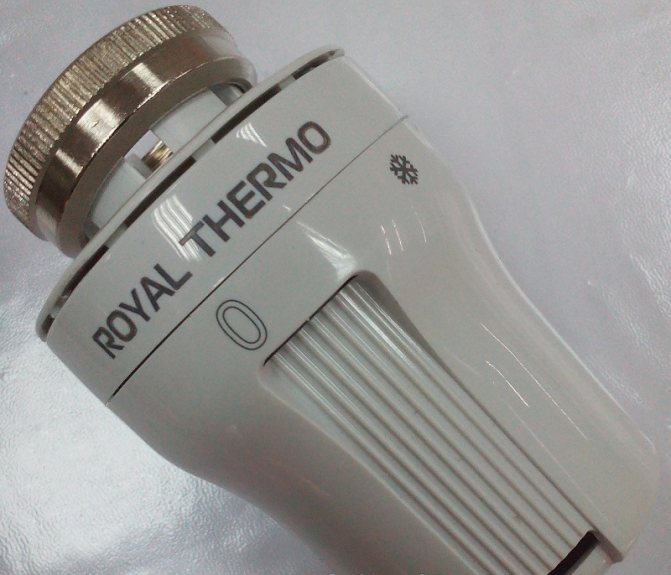

Thermo thermal heads are distinguished by their reliability and build quality. Among the offers there are models with a remote sensor
Place # 4 - Producer Caleffi
The Italian manufacturer Caleffi supplies a wide range of radiator thermal heads. The Caleffi 210000 model is programmable. It is equipped with a digital liquid crystal temperature display. In addition to the temperature value, it shows the time, date, set daily program.


When buying equipment for heating systems, be sure to ask the seller for accompanying documents, manufacturer's warranty and product instructions
When programming for a week, you can set 3 temperature levels: "Comfort", "Economy", "Anti-freeze". This head is installed in tandem with Keleffi valves.
Place # 5 - Salus Company
The German firm Salus also enjoys a well-deserved reputation. For example, the Salus PH 60 model is an electronic head with non-volatile memory, the ability to set the temperature regime for a week. Temperature range - +5 - +40 ° C.
Power is supplied from 2 AA cells. The display has the function of backlighting and displaying temperature parameters, as well as the charge level of the cells.


New development - mini-thermal head wireless, powered by batteries. You can control the device via a computer or smartphone, after downloading the Smart Home application
Technical innovations never cease to delight users - wireless thermal heads allow the owner to create a comfortable indoor climate while being in the other end of the city or in another country. And all this becomes possible if you integrate the device into the heating system of a smart home or download a proprietary application.
What are thermostats for?
The weather in the winter months changes from severe frosts to thaws with positive indicators and vice versa. In such situations, the heating system is subjected to high loads, which can lead to pipe rupture. Here the thermostat for heating radiators comes to the rescue, which is installed on each battery over the entire area.
In private households, it is possible to create a different climate in individual rooms, depending on the preferences of the residents.
Private houses, in which heating systems are equipped with thermostats for heating batteries, are able to create a different climate in each room, according to sanitary standards and personal preferences. This design adds comfort during the winter months and drastically saves the homeowner's budget.
The benefits of temperature controls on a heating radiator:
- The owner does not need to constantly monitor the operation of the sensor, the process is automated;
- The ability to distribute heat to different rooms, depending on the needs;
- Reducing the volume of electricity and fuel consumption, saving the home budget;
- In an emergency, only one battery is disconnected.
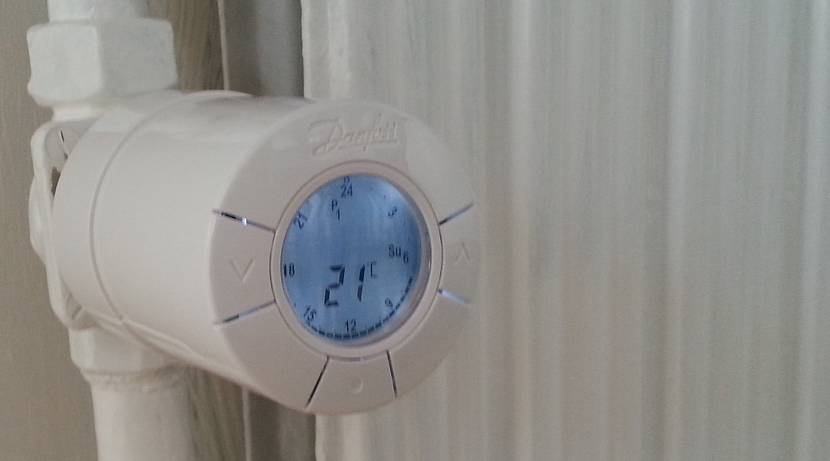

Thermostat screen shows battery temperature Source pengepugeren.dk




















